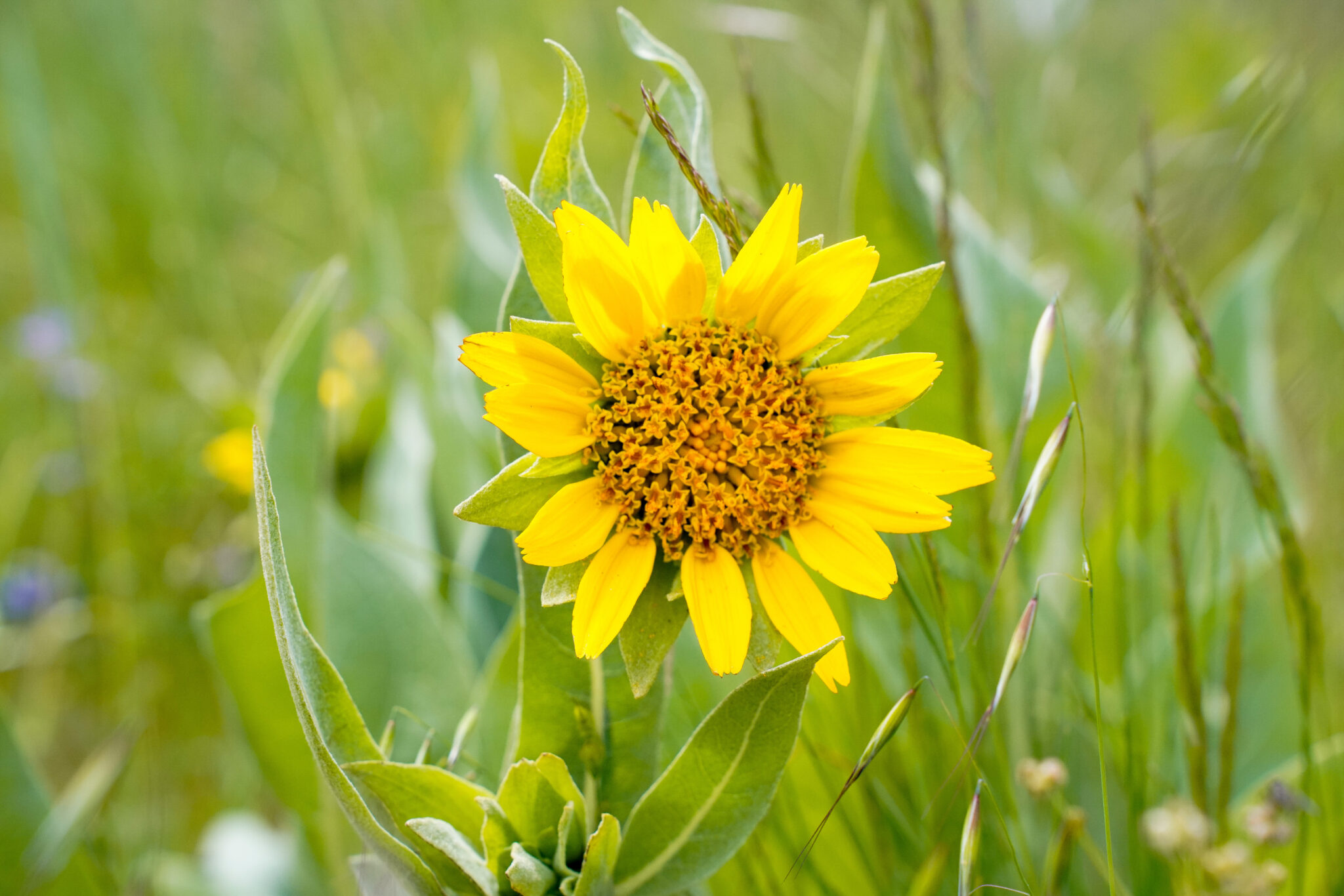
8 Summer Wildflowers Blooming in the Santa Lucia Range
July 10, 2023
By Andrew Evans, Conservation Grazing Associate
This spring and summer, we’ve been seeing an abundance of diverse native wildflowers blanketing our grassy hillsides, poking up out of rocky outcrops, and brightening our lowland meadows. After a wet winter, the seeds of drought-adapted plants that have laid dormant in the soil are springing to life once again.
When walking on grassland trails, whether on Penon Peak, Black Mountain, Vasquez, or the Mesa, look out for these Conservancy favorites:
1. California Poppy
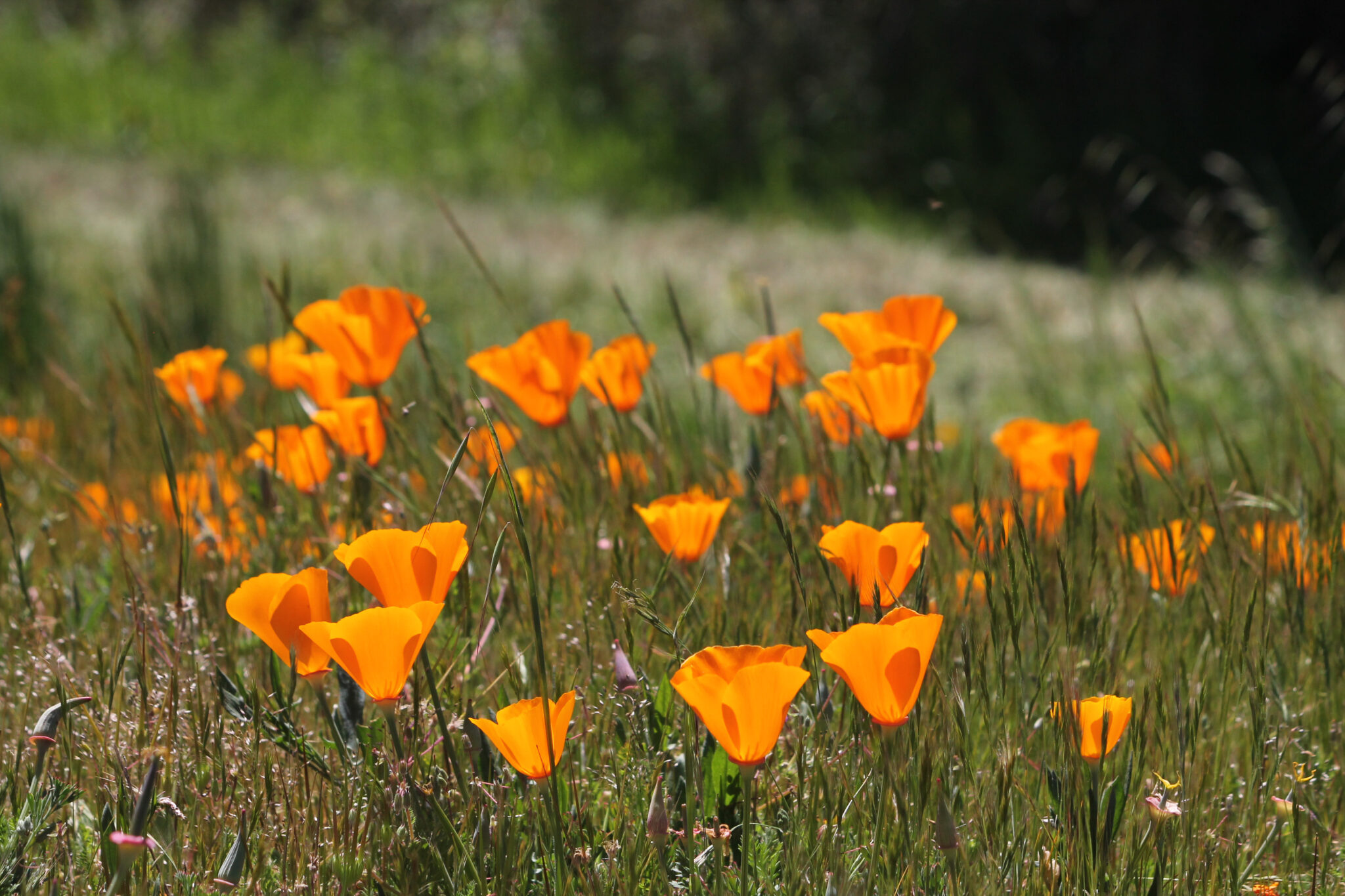
Photo by Alix Soliman
Bloom: February-September
California poppies (Eschscholzia californica) are the emblems of our state. Interestingly, what used to be considered 90 different species eventually got lumped into the single, wide-spread species we now know as the California poppy. Although these poppies are perennial, they can form annual super blooms given the right weather conditions. Their large flowers stand out from afar, but you need to see the underside of the flower to accurately distinguish the many varieties.
2. Common Yarrow
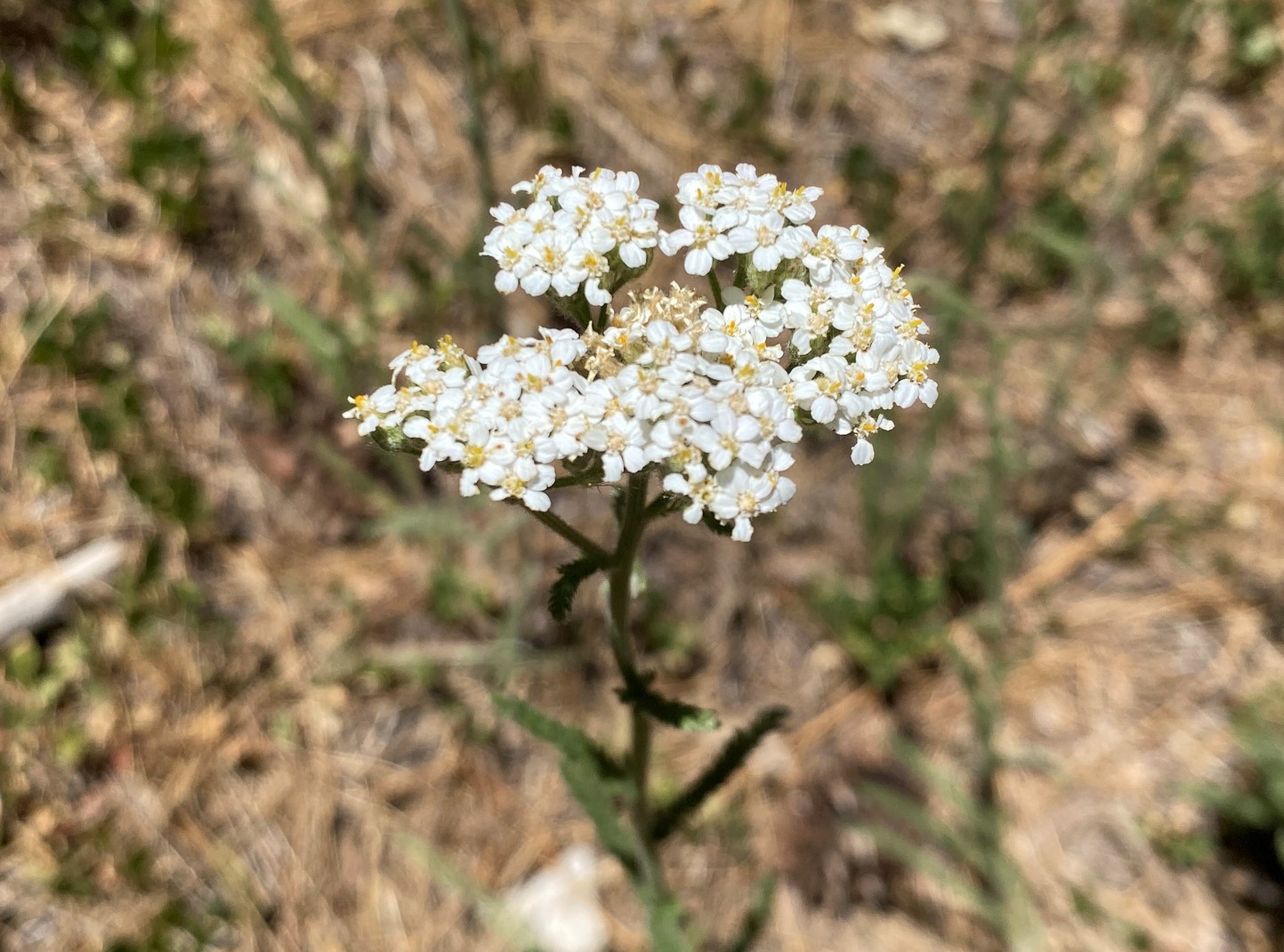
Photo by Andrew Evans.
Bloom: April-August
Immediately distinguishable by its feathery leaves, common yarrow (Achillea millefolium) is quite common on The Preserve, especially in transition zones between oak forests and grasslands. Yarrow is perennial, and produces knee-high stalks of white flowers. Indigenous peoples commonly used yarrow as an analgesic for colds.
3. California Wild Rose
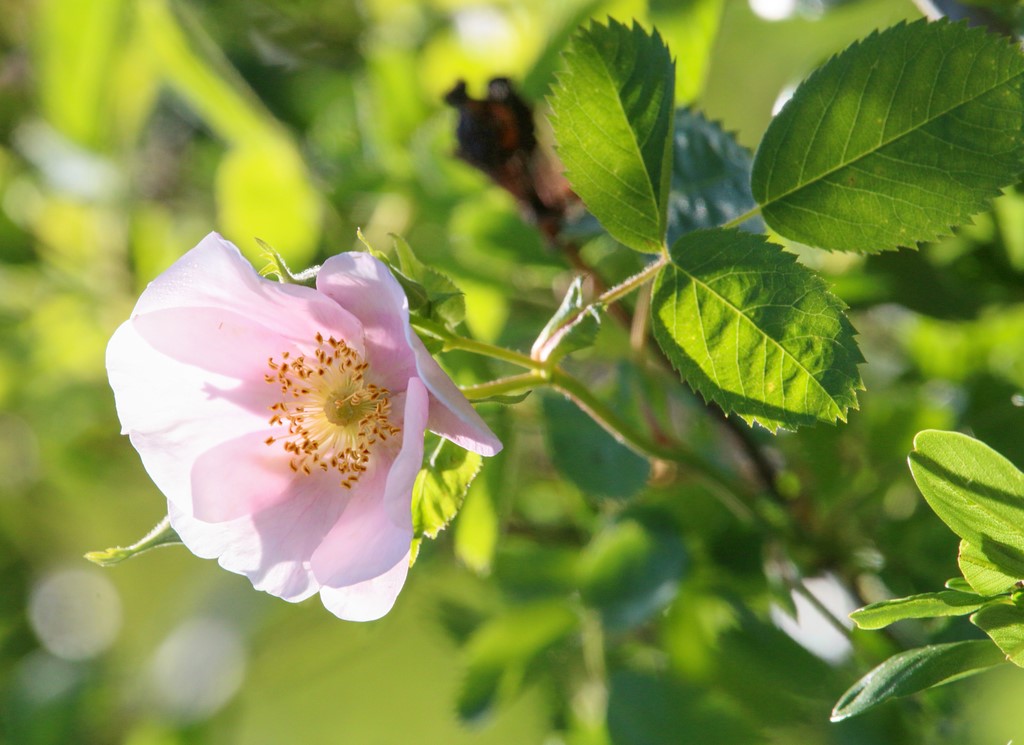
Photo by Erika Fleniken.
Bloom: May-August
The Preserve is home to one of California’s widespread native rose species, California wild rose (Rosa californica). Though not necessarily common, they can show up in a variety of Preserve habitats, from open grasslands, wetlands, and oak understories. Their smell is intoxicating and their rosehips can be brewed into a delightful tea, just be careful of thorns!
4. Woolypod Milkweed
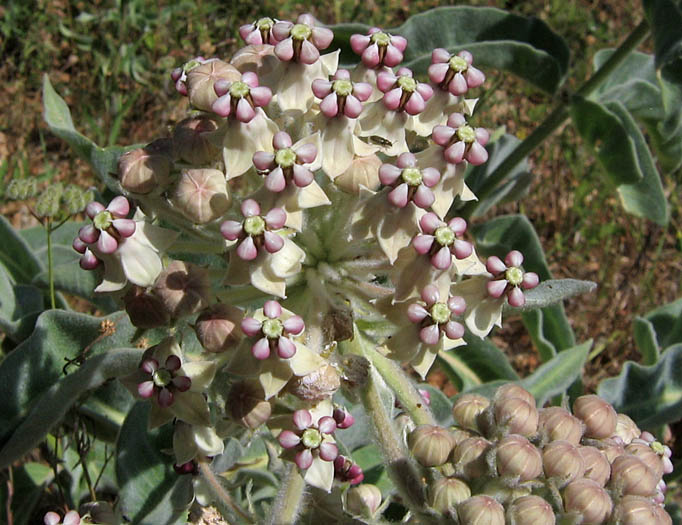
Photo by Anthony Valois
Bloom: June-August
A standout on the dry Preserve uplands of Black Mountain and Penon, woolypod milkweed (Asclepias eriocarpa) plants are spaced out from each other, reach hip-height, have fuzzy leaves, striking flowers, and a bloated pod of seeds. Come late summer, you may see these milkweeds’ seed pods exploded with silky fibers, on which the seeds float away with the wind.
5. Tarweeds
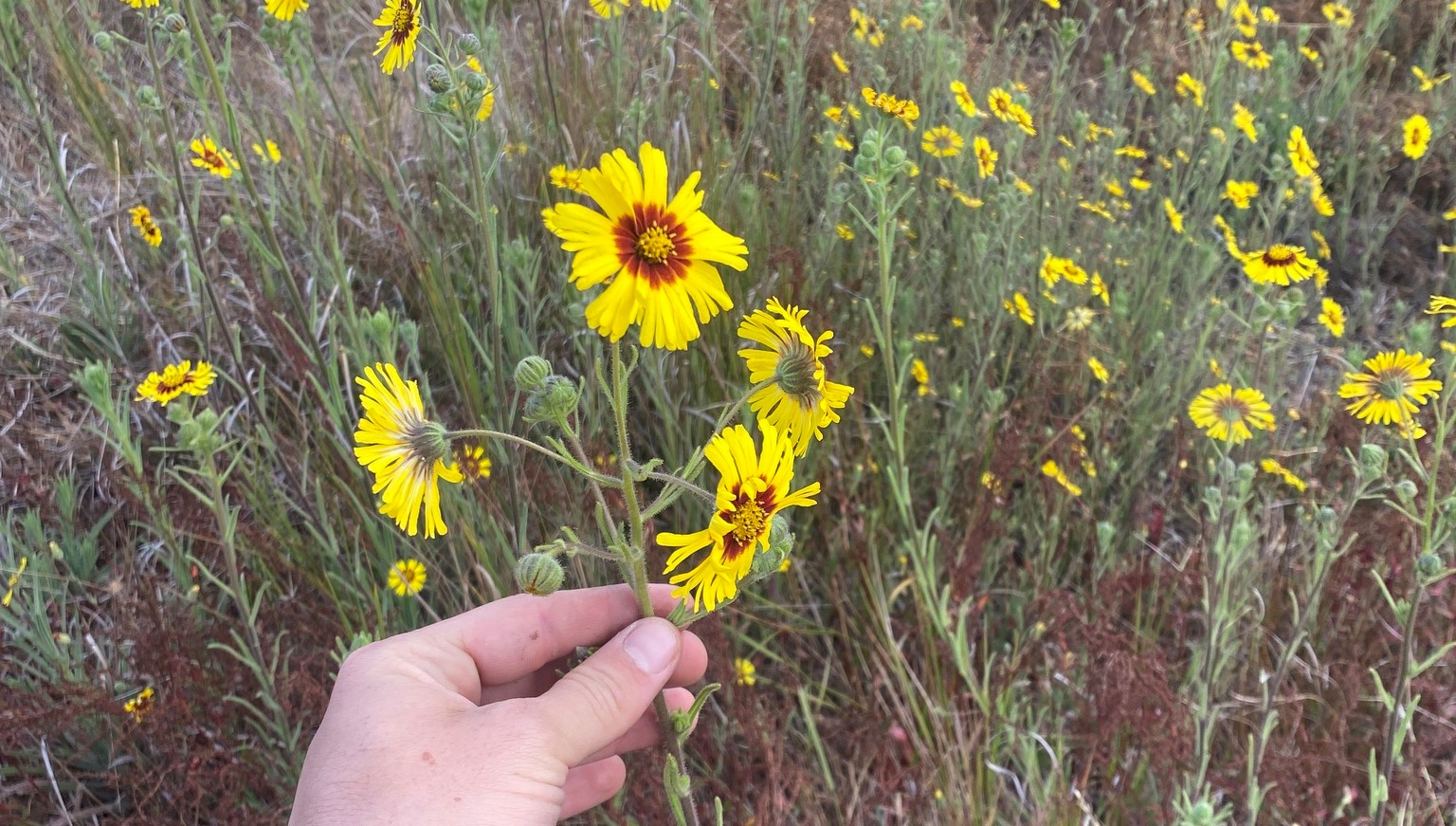
Common madia tarweed. Photo by Andrew Evans
Bloom: June-August
The Preserve hosts a diversity of summer-blooming tarweeds, including coast tarweed (Madia sativa), slender tarweed (M. gracilis), common madia (M. elegans), and coastal tarweed (Deinandra corymbosa). They are common throughout the Preserve, but especially the San Francisquito Flats. Walking through fields of tall tarweed plants will make your pants black and sticky, so watch out!
6. Pacific Aster
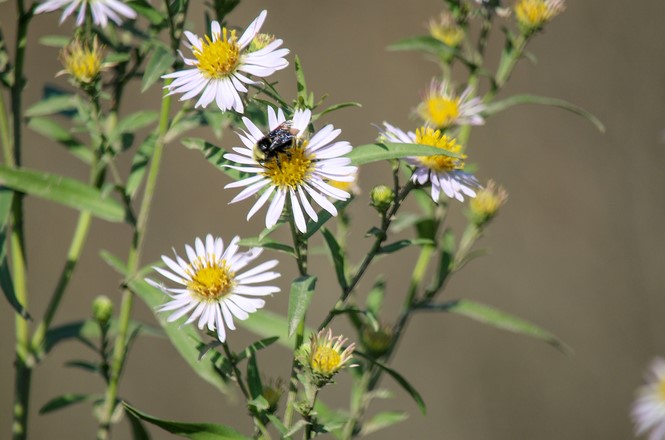
Photo by Erika Feniken
Bloom: July-August
Uncommon on The Preserve, pacific aster (Symphyotrichum chilense) crops up in patches of the flats in late summer. As you get closer, you will find their petals have a pale pink or lavender hue with yellow in the center, sitting atop a spindly stalk of leaves.
7. Cobweb Thistle
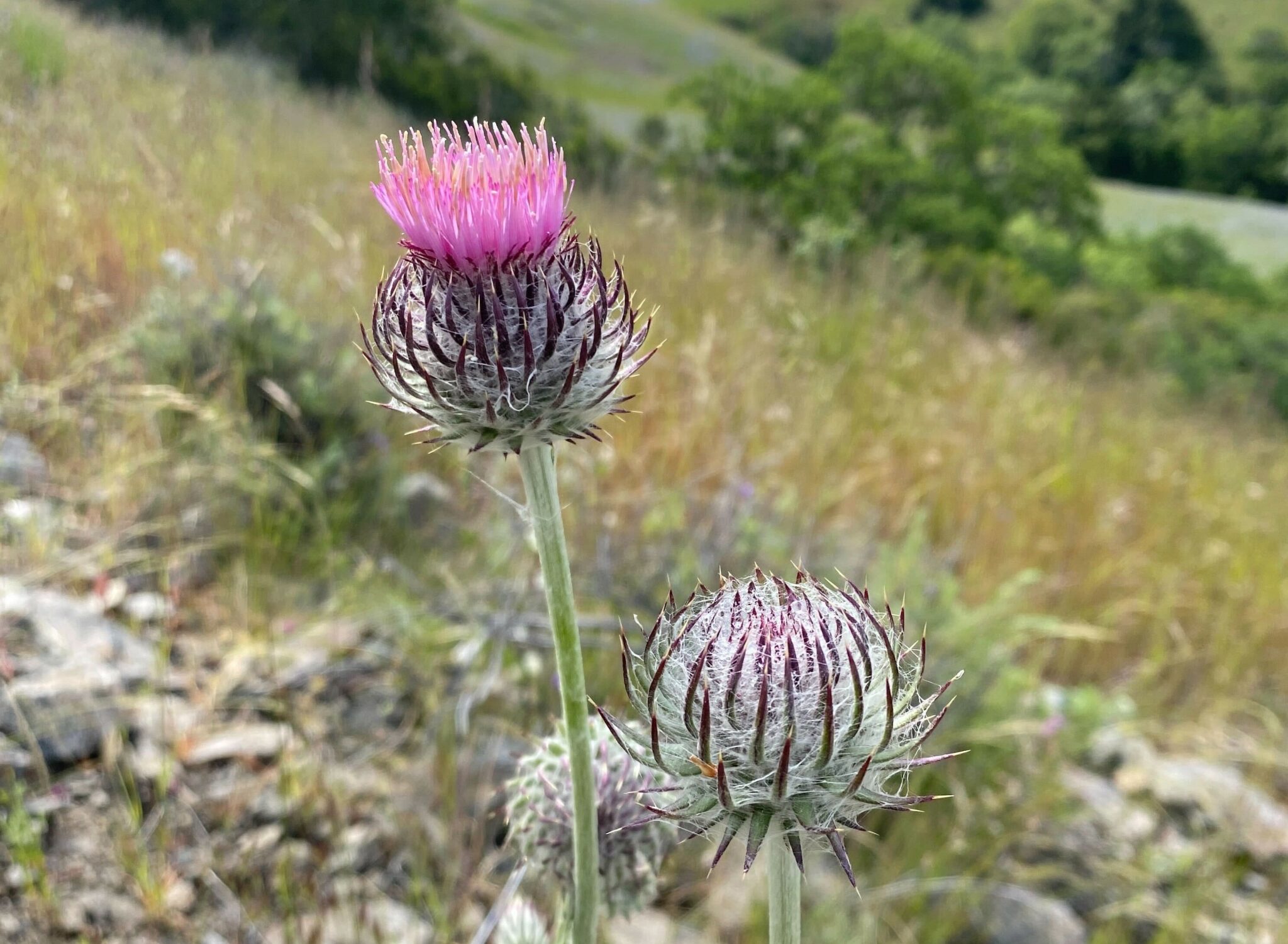
Photo by Andrew Evans
Bloom: May-July
Not all thistles are invasive! The Preserve has two known native thistles, the wicked cobweb thistle (Cirsium occidentale) and clustered thistle (C. brevistylum). They are far less common than invasive thistles and tend to stand in single stalks instead of dense patches. The cobwebby thistle is found in oak woodlands, savanna, and chaparral more than open grasslands and can be identified by its pale green color and webby fibers that wrap the magenta or red flowerhead.
8. Shining Mule’s Ears

Photo by Alix Soliman
Bloom: March-July
Shining Mule’s ears (Wyethia glabra) is a native sunflower found in Preserve grasslands. Recognizable as a shorter version of the popularized sunflower variety, you may see mule’s ears or their dried seed heads in oak savannas, forest meadows, or open grasslands.
Remember to stay on established trails and leave the wildflowers be. This fabulous natural phenomenon has a history of inhibiting hikers’ better judgment in California. Many of our native wildflowers are annual species, meaning they live, die, and produce their seed in a single season. If our annuals get stomped, mowed, or picked before they drop their seeds, it greatly limits their ability to bloom in following years. Take a picture and respect the flower!
For guides to wildflowers in the area, check out Wildflowers of the Santa Lucia Preserve by Rod M. Yeager and Monterey County Wildflowers – A Field Guide by Rod M. Yeager and Michael Mitchell.